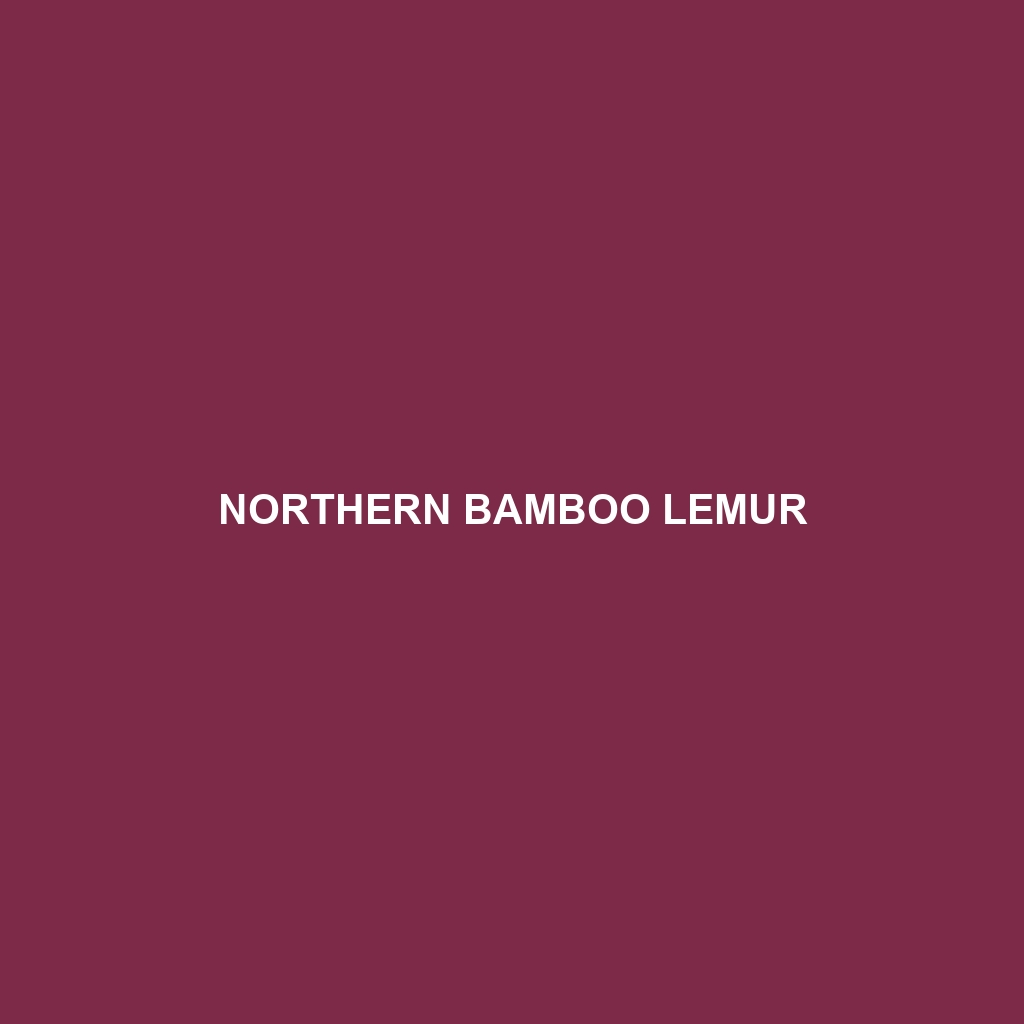Northern Bamboo Lemur
Common Name: Northern Bamboo Lemur
Scientific Name: Hapalemur aureus
Habitat
The Northern Bamboo Lemur, native to Madagascar, primarily thrives in tropical rainforests and is predominantly found in the northeastern regions of the island. These lemurs favor dense bamboo thickets, where they can easily navigate the complex vegetation. Their habitat is characterized by high humidity and rich biodiversity, which supports their survival and reproduction.
Physical Characteristics
The Northern Bamboo Lemur is a medium-sized primate, measuring approximately 40 to 50 centimeters in length, with a bushy tail that can reach up to 60 centimeters. They have a distinctive fur coloration, ranging from grayish-brown to olive-green, helping them blend into the forest environment. Their large, expressive eyes and unique facial markings, including a dark mask and light cheeks, make them particularly charming.
Behavior
Northern Bamboo Lemurs are primarily nocturnal, exhibiting high levels of activity during the night. They are known for their social behavior, often found in small family groups. Their playful nature and communication through a variety of vocalizations make them an engaging species to observe in the wild. They are also excellent climbers, using their agility to forage and escape predators.
Diet
This species primarily feeds on bamboo, especially young shoots and leaves, making up about 90% of their diet. In addition to bamboo, they occasionally consume fruits and flowers, demonstrating diverse feeding habits that contribute to their adaptability in the wild. Their specialized digestive system allows them to process the high cellulose content in bamboo effectively.
Reproduction
The reproductive habits of the Northern Bamboo Lemur typically include a breeding season that occurs between May and August. Females usually give birth to one offspring after a gestation period of approximately six months. The young lemurs remain dependent on their mothers for up to a year, during which they learn essential survival skills and social behaviors.
Conservation Status
According to the International Union for Conservation of Nature (IUCN), the Northern Bamboo Lemur is currently classified as endangered due to habitat destruction and fragmentation caused by logging and agricultural practices. Conservation efforts are crucial to protect this species and its habitats.
Interesting Facts
One fascinating aspect of the Northern Bamboo Lemur is its remarkable ability to tolerate cyanide levels found in bamboo, which are harmful to most other species. Their unique adaptations to their bamboo diet highlight the importance of this species in understanding evolutionary responses to specific environmental conditions.
Role in Ecosystem
The Northern Bamboo Lemur plays a vital role in its ecosystem by aiding in the seed dispersal of various plant species, thereby supporting forest regeneration. Their feeding habits influence vegetation growth and maintain the ecological balance in their habitat, making them integral to the health of Madagascar’s forests.
